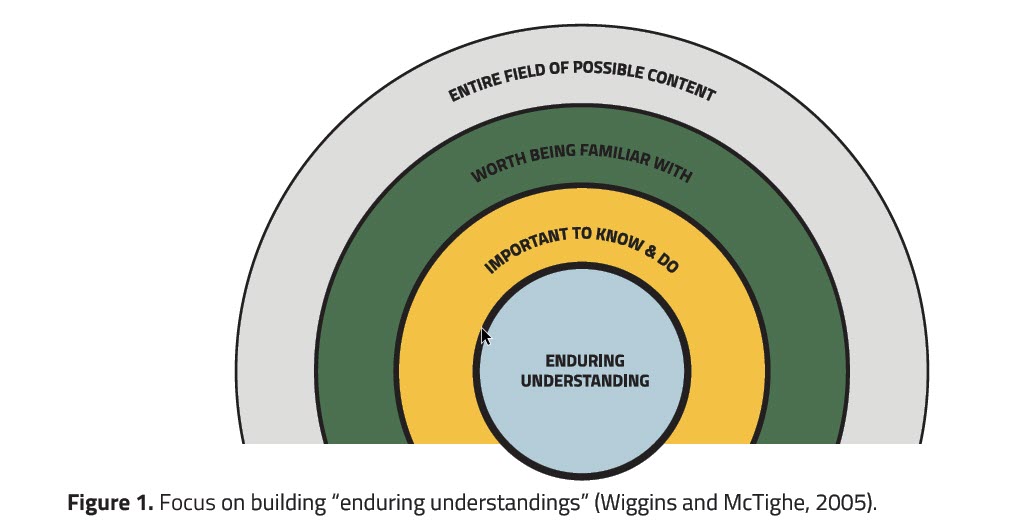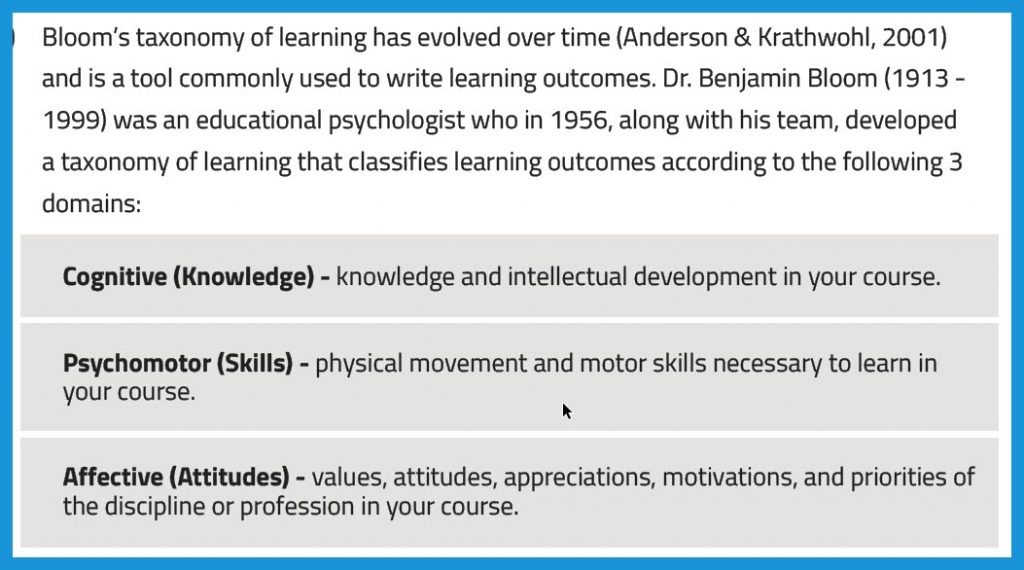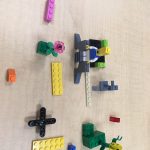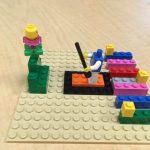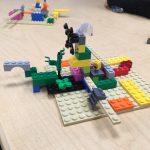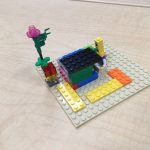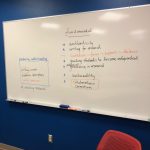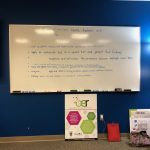Academic Writing Workshops
Workshop Agenda
- Essentials: Enduring Understandings
- Discussions: Course Features – Individual Priorities
- Definitions and Considerations
- Get the Basics: Well-written course-level outcomes
- Writing and Discussing LO’s for Writing 1000
- Vision/ Mission
Credit: Much of the workshop is based on and many of the visuals are taken from Learning, C. for T. and. (2018, December 1). A Guide to Learning Outcomes at the University of Alberta. CC-BY-NC 4.0 https://doi.org/10.7939/R3JD4Q569
1. Enduring Understandings
1.1 Warm-up Activity:
Name one course that sticks out in your mind from your time as a student at a university. What’s the most essential thing you still remember from that course?
2. Course Features – Priorities
ACTIVITY: Discussing specific course/ program features
Instructions:
STEP 1: Choose 16 cards from the pack which define the key features of the Writing 1000 course or a potential program. Work individually or in a team to assemble the 16 cards into a diamond shape with the most important feature at the top and the least important at the bottom. This will help you determine the relative importance of each aspect and where your priorities lie.
Resource: OULDI_Pedagogic_Aspects_v8_Release.pdf
STEP 2: Compare your sets with the diamonds of your peers. Does everyone agree on the course priorities? Where do you differ?
STEP 3: Have a look at your cards. Are any colour of cards missing? If so, what might be the impact on student experience? Orange=Guidance and Support, Blue=Content and Experience, Green=Communication and Collaboration, Purple=Reflection and Demonstration.
3. Definitions and Considerations
3.1 Why are learning outcomes important?


3.2 What are learning outcomes?
- specify the “knowledge, skills, attitudes, competencies and habits of mind” of a ‘typical’ student on successful completion of a course (Lesch, 2012)
- define the scope of the course,
- use language that is comprehensible to students and prospective students before they undertake the course,
- are measurable, realistic and achievable within the context and timeframe,
- are inextricably linked to the learning outcomes of programs,
- are supported through teaching and learning activities,
- are demonstrated through assessment.
ACTIVITY: Discussion
3.3 Before you begin writing outcomes, discuss with your colleagues:

- Who are your learners (e.g. needs, characteristics)?
- What is the position of your course relative to the entire program of study?
- What enduring understandings are desired? What are the important understandings we want students to truly grasp and retain after they have forgotten many of the details?
- What is important for students to know, do, or reflect on?
4. Get the Basics: well-written course-level outcomes
- Define what students will be able to do in the time given (time-bound);
- State the specific behavior that students are expected to demonstrate (using a measurable/assessable verb);
- Can be assessed.

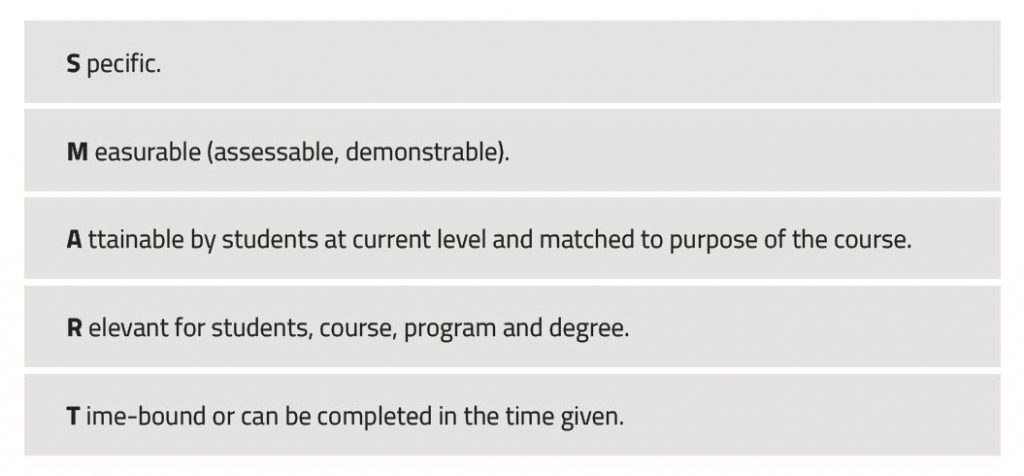
Excercise p. 22

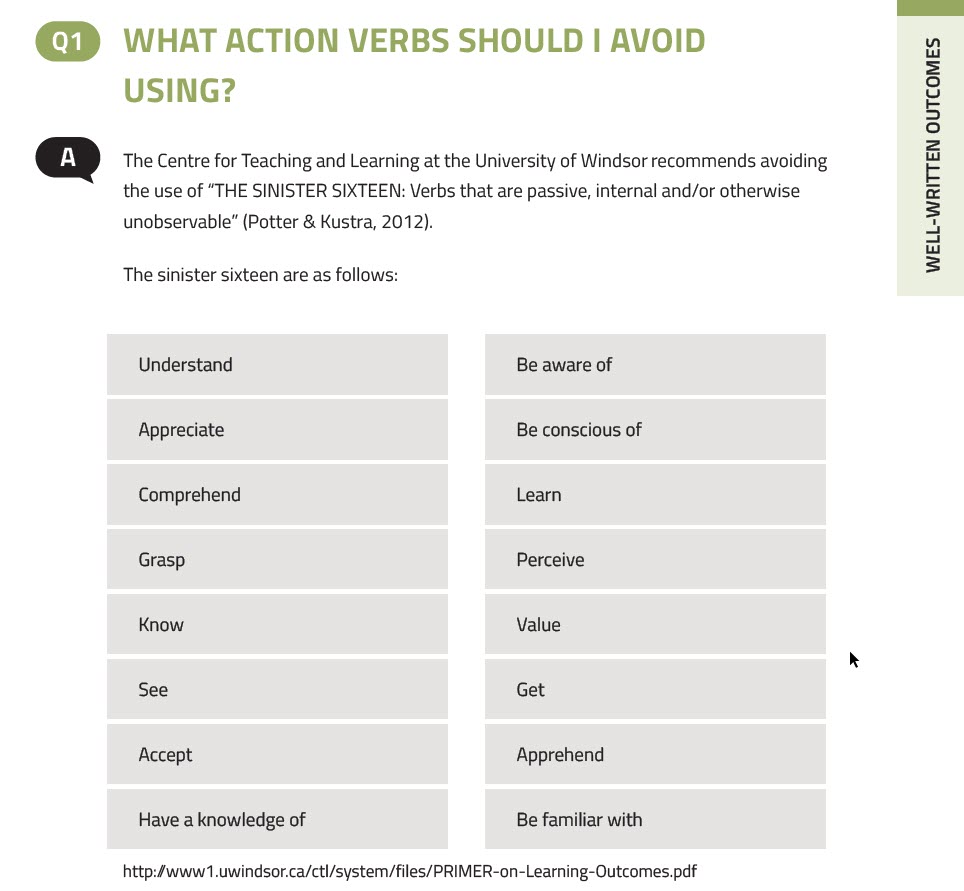
5 Writing and Discussing LO’s for Writing 1000
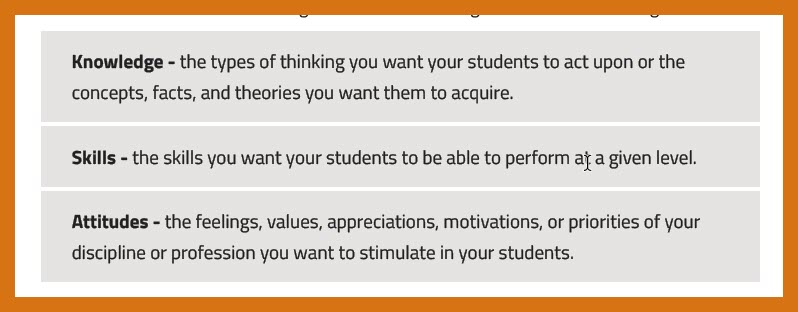
5.1 Different Frameworks
| Dee Fink’s holistic Significant Learning (2003; 2013)
|
Bloom’s Taxonomy of Learning (1956) (Anderson & Krathwohl, 2001)
|
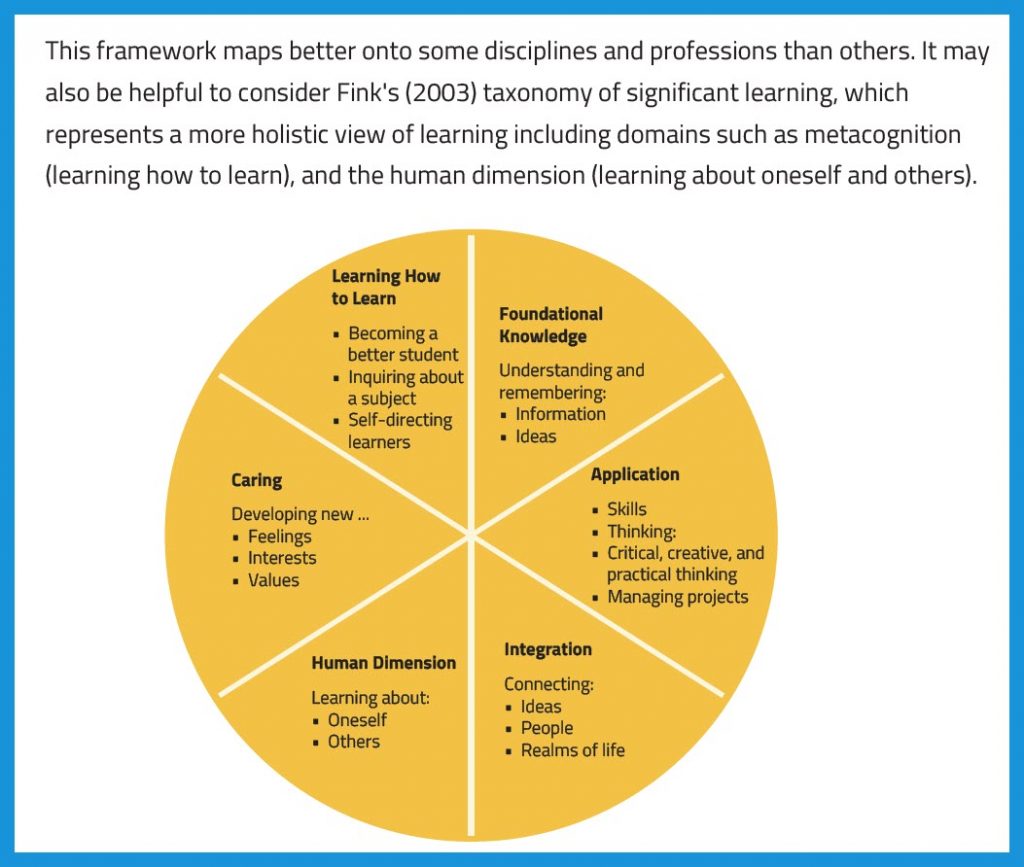
5.2 ACTIVITY: Writing Outcomes
Instructions:
STEP 1: Work alone first. Identify the knowledge, skills or attitudes you require students to demonstrate in your course.
STEP 2: Describe the learning outcomes using the KSA you just identified. You can use the following handout for more examples of measurable verbs correlating with either framework. Write your outcomes on post-it notes (one outcome per note).
Handout resource: Designing-SMART-Learning-Objectives (1)
STEP 3: Post your notes on the shared space. Now compare your outcomes with the ones your peers suggest. What common set of learning outcomes do you want to agree upon for the Writing 1000 level course?
5.3 ACTIVITY: Discussing the course content, activities and assessments
Instructions: Work with a peer.
References:
Fink, L. D. (2003). Creating significant learning experiences: An integrated approach to designing college courses. San Francisco: Jossey-Bass.
Fink, L.D. (2013). Creating Significant Learning Experiences: An Integrated Approach to Designing College Courses, Revised and Updated. San Francisco, CA: Jossey-Bass.
Galley, R. (2012). The Design Studio / OULDI_Pedagogic_Aspects_v8_Release.pdf. Retrieved December 4, 2019, from http://jiscdesignstudio.pbworks.com/w/file/60619333/OULDI_Pedagogic_Aspects_v8_Release.pdf
Greenleaf, E. (2008). Developing Learning Outcomes: A Guide for University of Toronto Faculty. Centre for Teaching Support & Innovation, University of Toronto, Canada. Retrieved from: http://teaching.utoronto.ca/wpcontent/uploads/2015/08/Developing-Learning-Outcomes-Guide-Aug-2014.pdf
Kenny, N. & Watson, G. Open Learning and Educational Support, University of Guelph CC-BY-NC-SA 4.0. Retrieved from https://www.tru.ca/__shared/assets/assessinglearningoutcomes33278.pdf
Kennedy, D., Hyland, Á., & Ryan, N. (2005). Writing and Using Learning Outcomes: A Practical Guide. Retrieved from: https://www.fibaa.org/fileadmin/uploads/content_uploads/Writing_and_Using_Learning_Outcomes_02.pdf
Learning, C. for T. and. (2018, December 1). A Guide to Learning Outcomes at the University of Alberta. CC-BY-NC 4.0 https://doi.org/10.7939/R3JD4Q569
Lesch, S. (2012). Learning outcomes. Learning Achieved by the End of a Course or Program: Knowledge-Skills-Attitudes. National Institute for Learning Outcomes Assessment.
The University of New Mexico School of Medicine (2005). Effective Use of Performance Objectives for Learning and Assessment. Retrieved from https://engaged.cornell.edu/wp-content/uploads/2017/06/Designing-SMART-Learning-Objectives.pdf
Wiggins, G.P. & McTighe, J. (2005). Understanding by Design. Expanded 2nd Ed. Alexandria, Virginia: Association for Supervision and Curriculum Development (ASCD).
Wiggins, G.P. & McTighe, J. (2012). Understanding by Design® Framework. Alexandria, Virginia: Association for Supervision and Curriculum Development (ASCD). Retrieved from: http://www.ascd.org/ASCD/pdf/siteASCD/publications/UbD_White-Paper0312.pdf
6. Vision and Mission

